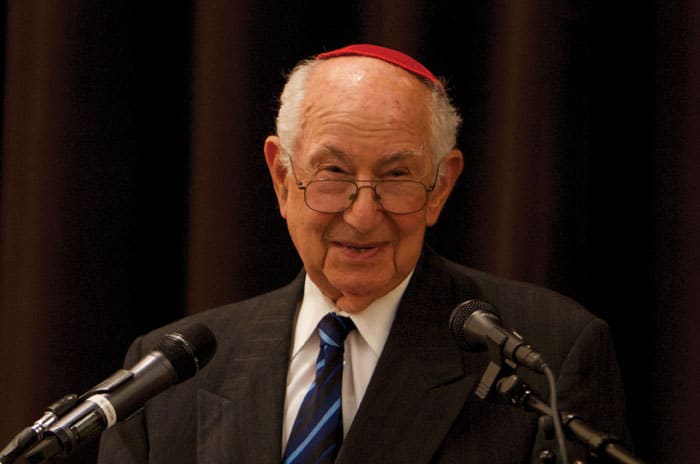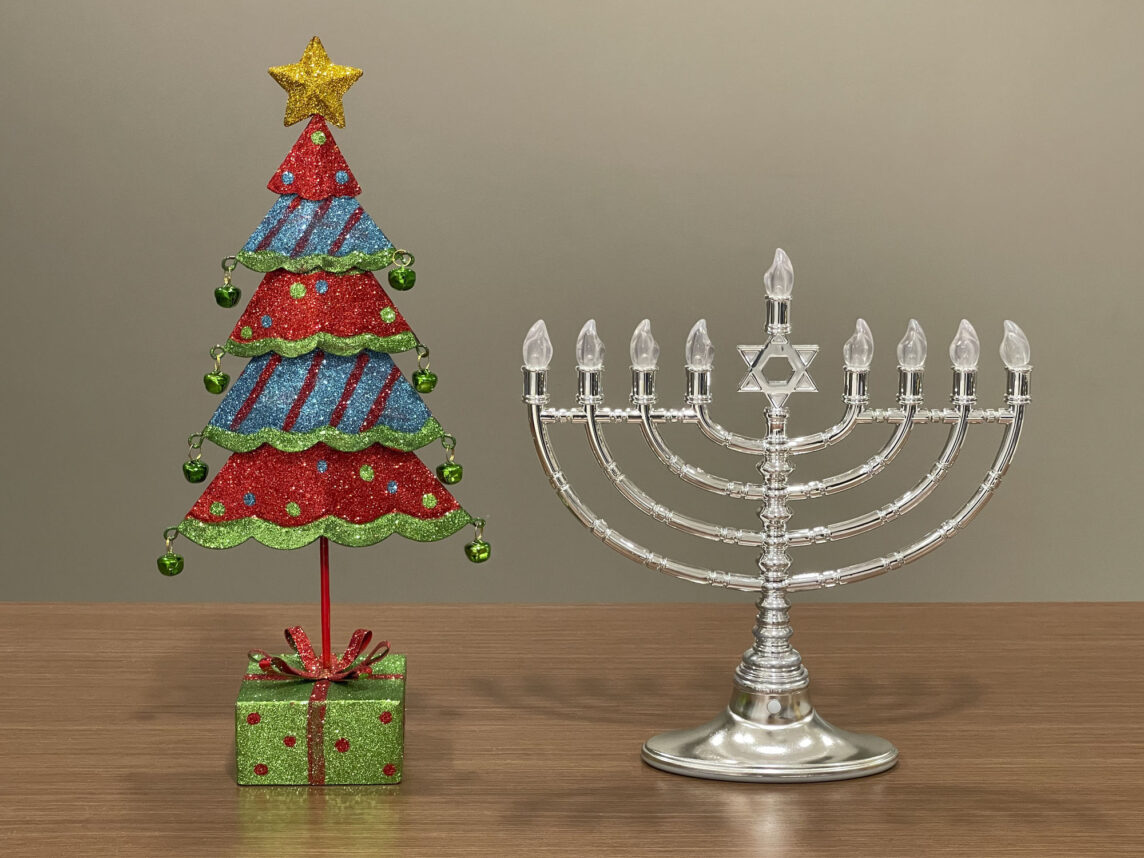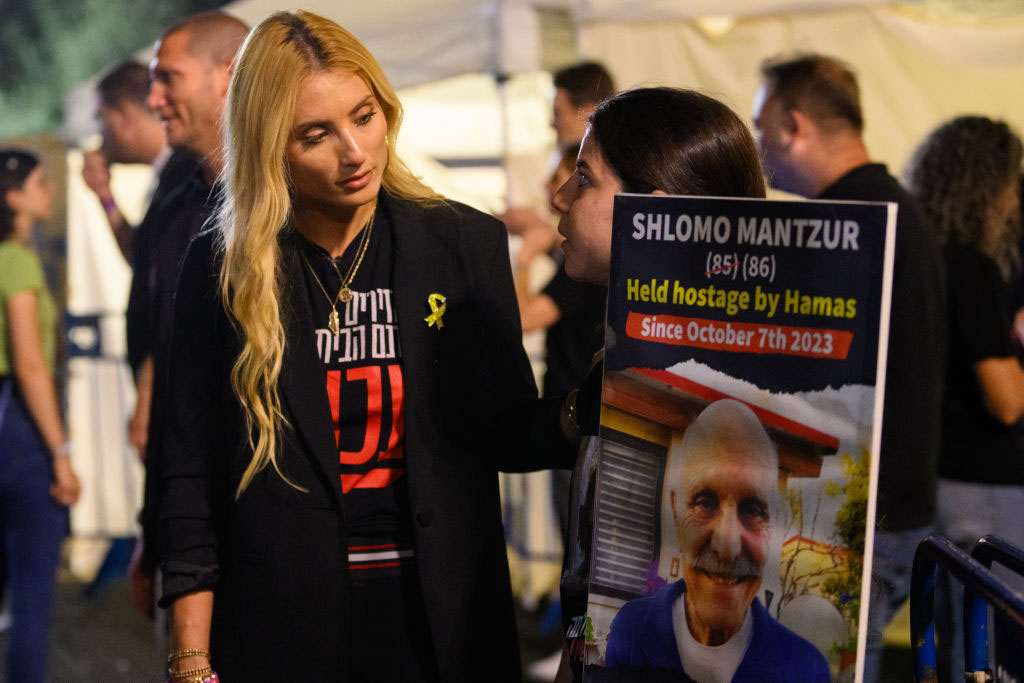
We appeared seemingly out of nowhere. Or at least, out of somewhere many Americans, even some Jews, couldn’t identify on a map. In the words of one American Jewish leader in Los Angeles who was asked to help with our resettlement, “What’s an Iranian Jew?”
We weren’t Arabs; we were distinctly Persian, with siddurim (prayer books) back home that displayed Hebrew on one page and Persian on the other. And after 2,700 years in one land, we fled the 1979 Islamic revolution in Iran, abandoning our thriving professions and homes, losing nearly everything and suddenly finding the word “refugee” stamped on our passports, as we held our collective breath in temporary asylum in states such as Italy and Austria.
There weren’t supposed to be Jewish refugees on the eve of the 21st century, a time when disco was declared legally dead and many middle-class American Jews who were removed from the trauma of the Holocaust were recording their comfortable lives on their giant camcorders while their children photographed their comfortable lives on their small Polaroids. It was one thing to support the Ashkenazi Jews who were trying to escape the evil of the USSR, but the language, culture and history of Persian Jews were, well, just too foreign.
We were quickly resettled around the United States, especially in the City of Angels. In the pews of Sinai Temple in West L.A., we talked too much. We showed up long after services began and stayed behind too long after they ended, socializing with one another in Persian, to the exclusion of others. It could be described less as socializing and more as passing on vital information regarding everything from how to immediately secure health insurance to how to help family members we’d left behind in Iran escape as well.
When we threw parties, we were too loud. When synagogue lay leaders spoke about synagogue membership dues, we were too quiet. But that was only because we’d never heard of membership dues until we arrived in this country.
Some Jews, including a few at Sinai Temple, initially didn’t seem to want us here. Or at least, they didn’t want so many of us, seemingly all at once, speaking incessantly during silent prayers, flooding schools (both Jewish and public) with our kids and demanding to know why the cucumbers were so mealy and inadequate at the few Ashkenazi-owned (kosher) supermarkets at the time. Though, in a few years, we would establish enough amazing kosher markets ourselves to ensure we had proper cucumbers for generations.
We were traumatized, but lively and hopeful. As Rabbi David Wolpe, the Max Webb Senior Rabbi of Sinai Temple said in his April 7th farewell sermon about the Persian Jewish community, “This is a heart community … the Persian community leads with the heart.”
But our sudden arrival in L.A. was unpleasant for many. Some of us were criticized for acquiring wealth too quickly after arriving here, while others were judged for being so financially insecure that we haggled incessantly over the cost of High Holy Days services. And like many refugees and immigrants, we often didn’t tell our painful stories to our children, which explains why, today, many of them don’t know about how difficult it was for us to start life all over again in America, and who helped us with life-saving compassion.
Foremost among those who helped and embraced our Iranian Jewish community was Rabbi Zvi Dershowitz, z”l, who passed away on March 26 in LA at the age of 95.
Dershowitz was rabbi at Sinai Temple for 50 years. He was also a camp director, a teacher, a counselor and an unstoppable advocate for human rights. At his memorial at Sinai Temple, Louis Kemp, one of his former campers at Wisconsin’s Camp Herzl in the 1950s, remembered visiting his old counselor along with another former camper, Bobby Zimmerman (Bob Dylan) in the late 1970s. Rabbi Dershowitz stood up and recognized them immediately as the former campers who were responsible for his many gray hairs. Many hugs ensued.
Born in Brno, Czechoslovakia, Dershowitz came to the U.S. as a 10-year-old refugee, leaving his home country on the last day of 1938. Dershowitz’s grandfather, Sholem, gathered the family and said, “Hitler is different. You have to leave.” Thirty-three days later, Hitler’s forces entered Brno when Germany invaded Czechoslovakia.
Dershowitz grew up in Williamsburg, New York, learning English and studying hard. In 1949, at age 19, he studied, worked and took leadership training in the nascent Jewish state. Dershowitz helped newly-arrived refugees from Yemen and other countries settle in Israel, an experience that never left him.
Whether as a camp director (he met and hired a camp staffer named Tova Russekoff at Camp Soleil in Ithaca, NY, and they were married in 1953), or as director at Brandeis-Bardin Institute in Simi Valley (1961), or director at Camp Ramah in Ojai (1963-1973), Dershowitz practiced a form of joyful Judaism that inspired thousands.
When Dershowitz was rabbi at Sinai Temple and received news of the Islamic revolution in Iran, he worked with local Jewish leaders to lobby Congress to grant political asylum to those with Iranian passports who could prove they were Jewish.
And when Dershowitz was rabbi at Sinai Temple and received news of the dangerous Islamic revolution in Iran, he worked with local Jewish leaders to lobby Congress to grant political asylum to those with Iranian passports who could prove they were Jewish. Staff at the Justice Department became accustomed to seeing his letters on Sinai Temple letterhead. He was one of the reasons many Iranian Jews were not only able to immigrate legally to this country, but secure jobs and integrate here. When it came to asking his congregation to embrace the newly-arrived refugees, Dershowitz had one motto: Kol Yisrael arevim zeh la zeh (“All of Israel is responsible for one another”).
Twenty years later, in 1999, Dershowitz re-emphasized this message, telling The Los Angeles Times, “we should invite them [Iranian Jews] into our home…We have much more in common than not — the same God, the same history [of persecution]. We only speak different languages and have different accents.”
Toby Dershowitz, one of Rabbi Dershowitz’s three daughters (along with his son, Hillel), told me that while growing up, “Evin Prison was a household word; Hacham Yedidia Shofet [the former chief rabbi of Iran] was a household name. I have to believe that my dad’s efforts and kitchen table conversations, and the late-night news of who was executed in Iran or thrown into Evin Prison had an impact on me as I pursued my own work.” Dershowitz, who is based in Washington, D.C., is the senior vice president for government relations and strategy at the Foundation for the Defense of Democracies (FDD), where she helps translate FDD’s research into government action, including research on Iran’s nuclear program, illicit finance and human rights abuses. She’s also written about holding Iran accountable for its acts of terrorism.
Though I never knew Rabbi Dershowitz nor his wife, Tova, I know that behind every good man is a good woman, which prompted me to ask Toby how her late mother, who had been married to Rabbi Dershowitz for more than 60 years before she passed away in 2015, supported her father’s work. “She was a full partner with my father,” Toby said. “When my father was about to go to shul and speak about how we, as a community, needed to embrace the new refugees and immigrants, he said to my mom, ‘I’m going to give a sermon and I might get fired.’ She said, ‘Give your sermon and do what you need to do.’ Some old-timers felt my father had gone too far to support the Iranian Jews, but he was willing to stand his ground and risk his pulpit …To Sinai’s credit, they didn’t fire him; on the contrary, they came to appreciate and learn from this experience. Today, Sinai Temple warmly and whole-heartedly embraces the Persian Jewish community.”
Indeed, for decades, Iranian Jews have served in leadership positions at Sinai Temple.
Indeed, for decades, Iranian Jews have served in leadership positions at Sinai Temple. One of those extraordinary leaders is Angela Maddahi, a longtime member (and past president) of Sinai Temple who is currently a student at the Ziegler School of Rabbinic Studies. She told me a story that encapsulated Rabbi Dershowitz’s humanity: Several years ago, Rabbi Dershowitz visited one of her relatives who was sick with cancer at the City of Hope institute. He spoke about his family, his life and how important it was to him “to devote himself to the community.” Several weeks later, her relative passed away. Rabbi Dershowitz conducted the funeral. “This was scheduled on the same day that his dear wife, Tova, was going to be buried,” said Maddahi. “No one knew that he first came to conduct my relative’s funeral, and then went on to tend to his wife’s.”
Having been born after the revolution (and lived in Iran, not the U.S., in the 1980s), I knew I needed to ask Iranian Jewish leaders who were active on the ground in L.A. during the Iranian Revolution about Rabbi Dershowitz. I asked Dariush Fakheri, a community leader, founder of SIAMAK (an LA-based Iranian Jewish organization) and editor of Cheshmandaz Magazine, about Rabbi Dershowitz.
“He was an absolute mensch,” said Fakheri, who arrived in the U.S. in 1976. “He went to battle for Iranian Jews. On Yom Kippur 1979, he invited former SIAMAK vice president Janet Afary to speak to the Persian Jews. He even let us open an Iranian desk at Sinai Temple.”
According to Fakheri, SIAMAK, with help of Sinai Temple and the Jewish Federation of Greater Los Angeles, met with representatives of the Attorneys Association of Los Angeles and also lobbied Congress. “They helped public schools take in more high school students from Iran because they didn’t have visas or green cards,” said Fakheri.
I asked Fakheri why Rabbi Dershowitz seemed to have such a personal stake in the fate of Persian Jews in LA. “He really wanted the members of his own congregation to accept us as we were,” recalled Fakheri. “It didn’t bother him if we had money or not. The rabbi just closed his eyes and thought this was 1946, and he had to do something to help refugees.”
But the tension with Sinai congregants and leaders was palpable; at times, it was downright awful. “The board’s problem was that we came to shul, but we didn’t become members,” said Fakheri, who, along with other Iranian Jewish leaders at the time, worked tirelessly to help then-Sinai board members understand that Iranian Jews weren’t familiar with membership models.
Rabbi Dershowitz, according to Fakheri, “loved Persian Jews. He would visit our homes for Shabbat dinner (he loved Persian food). He really appreciated the fact that we’re so family-oriented.” And, as Maddahi observed, embracing other Jews was “a natural behavior for Rabbi Dershowitz that resulted from his deep belief in God, the power of the Jewish way of life and humanity.”
Why did so many Persian Jews gravitate toward Sinai Temple? For one thing, thousands resettled in West Los Angeles, particularly near Westwood, and Sinai’s location and size were a blessing. Also, at the time, Nessah Synagogue, which was founded by Rabbi David Shofet upon his arrival in L.A., was on the other side of town, on Franklin Street in Santa Monica.
“These Iranians had just come out of the revolution,” said Fakheri. “They didn’t feel safe. But in that temple (Sinai), they felt safe. And they passed helpful information to each other.” It didn’t take long before Persian Jews wholly invigorated both Sinai Temple and Los Angeles itself. But first came acculturation. How did one obtain medical insurance? What was the significance of April 15th in this country? “In the first decade (late 1970-1980s), everything was about immigration and resettlement,” said Fakheri regarding his organization, SIAMAK’s, initial work. “By our third decade here, our biggest problem was dealing with addiction in the community.” That sad, yet truthful, acknowledgement merits an entirely separate column.
“My father even helped set up a business network for Persian Jews to help pair them with veteran business people in the community,” Toby told me. “He knew that refugees needed help with practical, day-to-day tasks and he worked with Jewish Family Services to address their integration needs. He understood, as an immigrant himself fleeing oppression, that there were specific things that needed to be done to help.” Rabbi Dershowitz and Tova, said Toby, also felt deeply connected to the “Soviet Jewish story,” even visiting with refuseniks in the former Soviet Union in 1975 and bringing them Jewish and Hebrew books that were banned at the time. “He and my mom were courageous and bold,” Toby said. Again and again, community members have told me that Rabbi Dershowitz was not a “fancy” man. In Toby’s words, “He did it with no fanfare. He just decided he was going to get it done.”
I asked Fakheri if he had a message for younger Iranian Jews who feel disconnected from the sacrifices and hardships of their parents and the life-saving support of the L.A. Jewish community: “When we came over here, they opened their arms and accepted us as we were; they did everything in their power to accept us in their own community,” said Fakheri. “It’s the job of our youth to pay that back, to stand by this country and by Israel. Please contribute positively to this community.”
In truth, I could have shared reflections from hundreds who knew and loved Dershowitz, but that would have merited a novel. But one of my favorite stories about Rabbi Dershowitz was told to me by my friend and community leader Sam Yebri, who came to the U.S. as a refugee when he was one-year-old: “From simchas to shivas, from the bima to the back row of Sinai Temple’s sanctuary, Rabbi Dershowitz left an indelible impact on the lives of two generations of Jewish Angelenos, including the many Iranian Jews he helped resettle with open arms,” said Yebri.
And then, Yebri told me something I’ll never forget in reference to learning with Rabbi Dershowitz for his own bar mitzvah in 1994: “And as my own kids approach Jewish adulthood,” said Yebri, “I will never forget Rabbi Dershowitz’s famous admonition: ‘Too much BAR, not enough MITZVAH.’”
Tabby Refael Refael is an award-winning writer, speaker and civic action activist, and weekly columnist for The Jewish Journal of Greater Los Angeles. Follow her on Twitter and Instagram @TabbyRefael






















 More news and opinions than at a Shabbat dinner, right in your inbox.
More news and opinions than at a Shabbat dinner, right in your inbox.